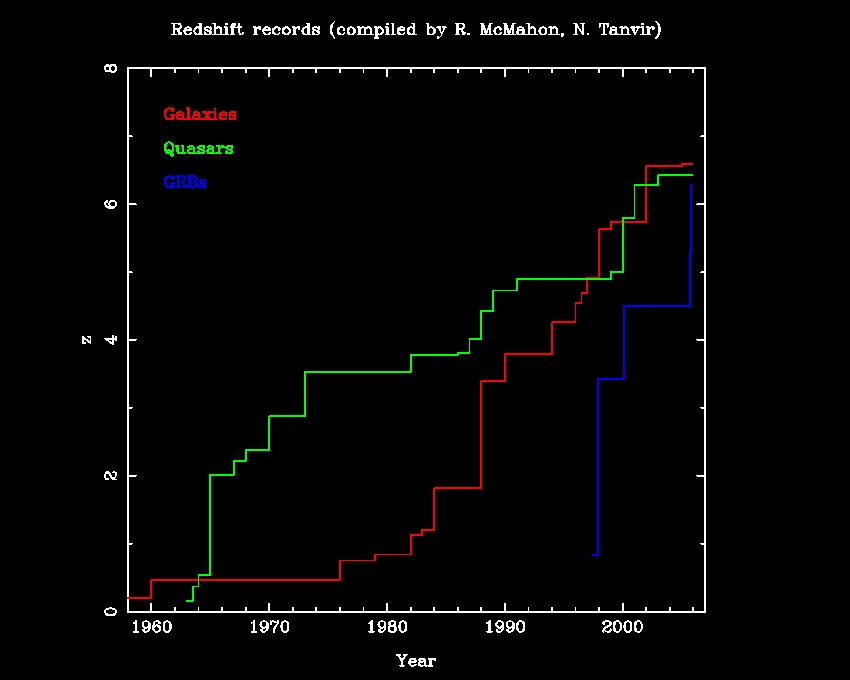
 Credit: R. McMahon & N. Tanvir; Swift Project
Credit: R. McMahon & N. Tanvir; Swift Project
A History of Looking Backward
In an expanding Universe, the past moves quickly away. Astronomers tell cosmological distance from the motion of a distant object away from us. This motion produces a cosmological redshift due to the Doppler shift, and, at greater distances light takes longer to reach the observer, so observing higher redshift objects allows astronomers to see farther back in time. The graph above shows how, gradually, astronomers have been able to look at higher and higher redshifts (and thus deeper and deeper into the past) by using a variety of astronomical objects. Normal galaxies are abundant in the Universe, but, composed of "only" trillions of stars, they are rather faint. It's taken astronomers a long time to build powerful enough telescopes to identify faint, distant, red galaxies. More promising are the quasars, powered by extremely bright supermassive black holes, and easier to spot at enormous distances. Extremely powerful explosions called gamma-ray bursts give astronomers a spotlight into the early Universe; they are so powerful they can shine brightly even at great distances, but they can be hard to pinpoint. Recent advances have enabled space-based satellites like the Swift Gamma-Ray Burst finder, large ground-based telescopes, and the Hubble Space Telescope to work together to determine the host galaxies of the burst, and to measure the host's redshift. In this way astronomers have used gamma-ray bursts to quickly identify host galaxies at large redshifts. The current redshift limits these techniques have achieved is about a redshift of 6, corresponding to a time when the Universe was only a small fraction of its current age.
<
HEA Dictionary ● Archive
● Search HEAPOW
● Other Languages
● HEAPOW on Facebook
● Download all Images
● Education ● HEAD
>
Each week the HEASARC
brings you new, exciting and beautiful images from X-ray and Gamma ray
astronomy. Check back each week and be sure to check out the HEAPOW archive!
Page Author: Dr. Michael F. Corcoran
Last modified Monday, 26-Feb-2024 17:36:31 EST


